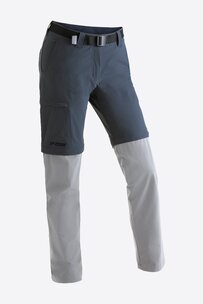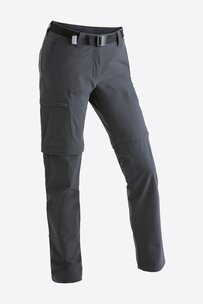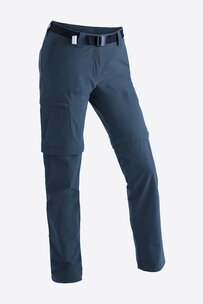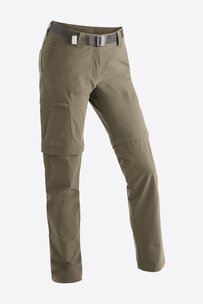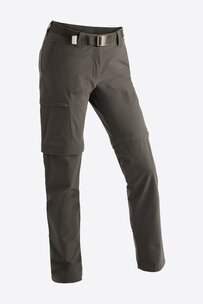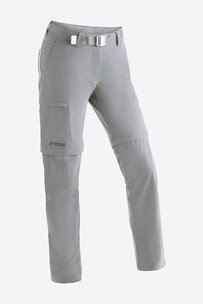
7th #Bloggerwandern hiking trip hosted by Rheinland-Pfalz Tourismus GmbH
Hiking on the volcano
Enjoying the great outdoors and networking on the side – that’s what the seventh blogger hiking trip hosted by the Rheinland-Pflaz Tourismus GmbH was all about. This year, the Eifel mountain range offered the perfect setting for the trip, thanks to its volcanic fields, forests, ancient castles and volcanic craters (“maars”). Blogger and social media expert Salomé Weber tells us what happened during the journey.
I’m standing on the edge of a volcanic crater, right in the middle of the Eifel mountain range, near the city of Gerolstein, part of the German federal state of Rhineland-Palatinate (“Rheinland-Pfalz”). Next to me are ten bloggers from Germany and the Netherlands, looking down into the circular crater covered in colourful flowers. I sense we’re all thinking the same thing: “I wonder how this place must’ve looked 15,000 years ago, when the volcanoes created the landscape which lies before us now.” And of course: “I wonder what’s the probability of the volcanoes being roused from their slumber over the next few days?”
Day 1: Wading through a sea of stones
“It’s not entirely out of the question” our guide Johannes Dunkler tells us. He adds: “But we’ll probably have to wait another 1,000 years”, which has me feeling relieved. The “Vulkaneifel” trail leads us through craters covered in flowering meadows and into the nearby forest, with information boards along the way displaying pictures of the area and up-to-date scientific information. The shade of the forest canopy feels quite cool, so I’m glad I can zip on the legs of my “Inara Slim Zip” to provide more protection against the cold. Between the maple trees, chestnuts and fir trees, you’ll find many impressive boulders looming into the sky here. That’s what they call the Gerolstein Dolomites, the last remains of a time long past when the Eifel mountains were covered by the sea. Some 380 Million years ago, these boulders were part of a massive reef in this primordial ocean. These days, it takes quite a bit longer to reach the sea from the Eifel mountains. But if you prefer stone to water, you won’t be disappointed. The area is a hobby geologist’s dream, with dolomite stones, reef stones, lava stones, ash stones, coloured sandstones and tuff stones blanketing the area. If you’re lucky, you might even find a fossil or two.
The best way to hike along the Gerolstein Dolomites on a one-day tour is to follow one of these trails:
• Gerolsteiner Felsenpfad (Link: https://www.eifelsteig.de/en/a-gerolsteiner-felsenpfad)
• Gerolstein Celtic Route (Link: https://www.eifelsteig.de/en/a-gerolsteiner-keltenpfad)
And if you’re looking to end the day on a culinary high note, I highly recommend visiting “Vulkanhof - Ziegenkäserei". This beautiful farm has been owned by the Holtmann family since 1961. In 1995, the family attached a dairy to the farm and re-focused on goat husbandry. That means the goats get to graze on healthy Eifel grass, which not only makes for a beautiful sight, but adds to the amazing taste of the farm’s dairy products as well.
Day 2: Feast your eyes on this…
The next day we hike on a section of the 11th stage of the Eifelsteig trail to what’s known as the “Eyes of the Eifel”. The name comes from the way the multitude of water-filled maars scattered across this part of the landscape look a bit like mysterious blue eyes when seen from above. Long ago, the area featured a total of 70 of these “eyes”, though only 12 of them are still filled with water today. The “Meerfelder Maar” is the largest among them, while the “Pulvermaar” is the deepest. The trail leading from Liesertal valley to the “Gemündener Maar” leads us through dark forests and picturesque valleys. Once again, I’m glad I brought my Inara Slim Zip pants – not because of the temperature this time, but because of the risk of catching ticks on the tall grass that lines the edges of the trail. After we’re done admiring the maars from the shore during the day, we decide to test just how cold the water really is. Of course, we’ve been warned about it plenty of times, but we figured “you never know until you try it out yourself”. I’m not going into any detail about how our experiment worked out, though ;)
Some hiking suggestions:
The 11th stage of the Eifelsteig features some of the best views of the entire trail, which makes it the perfect choice for hiking, even if you’re only planning on a one-day trip. If you’re tired, you can always use the no. 300 bus to get back to Daun from Üdersdorf.
• Here’s the link to the trail: https://www.eifelsteig.de/a-eifelsteig-etappe-11
At the end of this stage of the trail, you might want to take some time to relax at “Café KuliMaarik”. This beautiful little café offers not only a beautiful view of the Gemündener Maar, but a big selection of sweet and savoury dishes as well. A great combination, not just for hikers.
Day 3: Touching the sky
Normally, the 12th stage of the Eifelsteig is supposed to start with a panoramic view over the castles of Manderscheid. Unfortunately, due to the destruction resulting from the flooding in early August, we can only experience part of this stage. That’s why we start this day’s hike just outside of the town of Karl, in-between meadows and fields. The street quickly leads us to some narrower hiking paths which, in turn, lead deep into the forest. We follow the trail uphill and downhill through the Lieser valley. Along the Lieser river, we can catch glimpses of the volcanic landscape of the Eifel mountains through the trees. Towards the end of the stage, the forest clears and we catch our first glimpse of Himmerod Abbey. This former Cistercian monastery still sees regular services held in the abbey’s church while its restaurant offers regional dishes and drinks to weary travellers. The abbey offers a perfect coda to the three-day #Bloggerwandern hiking trip hosted by Rheinland-Pfalz Tourismus GmbH and Eifel Tourismus GmbH. Maier Sports supported the event as an official sponsor.
Some hiking suggestions:
The 18.2 kilometres of the 12th stage of the Eifelsteig feature some of the biggest highlights of the trail. Unfortunately, only a small stretch of it is open to the public at the moment.
• You can find all relevant information here: https://www.eifelsteig.de/a-eifelsteig-etappe-12
And you can find more information about Himmerod Abbey here: https://www.abteihimmerod.de/














